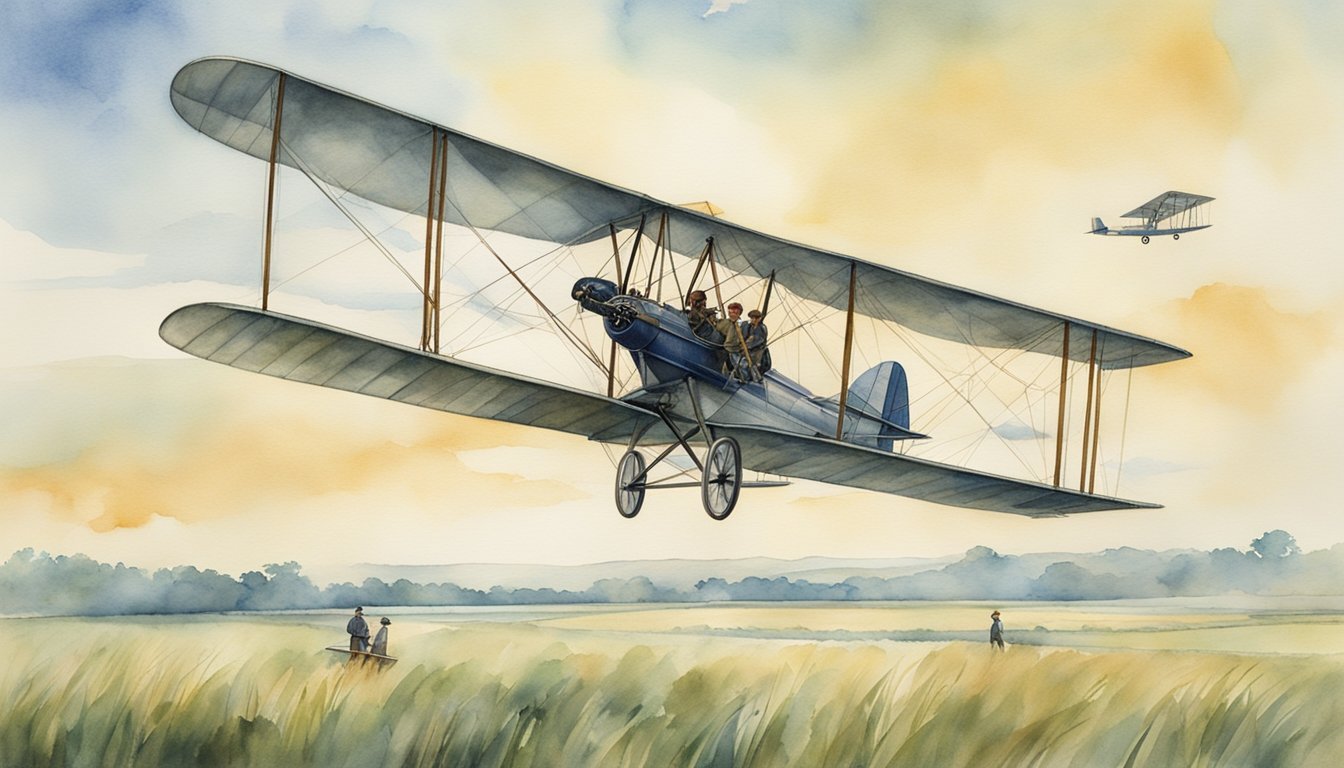The Wright Brothers’ Journey to Flight
The Wright brothers, Orville and Wilbur Wright, revolutionized the world with their pioneering achievements in aviation. This section explores the path they took from their early years to their monumental success in achieving powered flight.
Early Life and Influences
Orville and Wilbur Wright were born into the Wright family where their father, Milton Wright, a bishop, and their mother, Susan Catherine Koerner Wright, fostered a home environment rich with intellectual challenges. The brothers received early exposure to the principles of mechanics and design, which were crucial in their path to inventing the airplane.
Bicycle Business and Mechanical Skills
Their mechanical ingenuity was honed through their bicycle business in Dayton, Ohio, where the Wright brothers designed, built, and repaired bicycles. This experience with bicycles taught them the importance of balance and control, principles that would become central to their aviation experiments.
Inception of Aeronautical Experiments
Inspired by the work of aviation pioneers like Otto Lilienthal, the Wright brothers shifted their focus from bicycles to experiments with flight. They meticulously studied aeronautics and conducted numerous tests, including those in their self-built wind tunnel, to understand lift and control.
First Achievements in Powered Flight
On December 17, 1903, near Kitty Hawk, North Carolina, the Wright brothers achieved the first powered, sustained, and controlled airplane flight in history. Orville piloted the Wright Flyer for 12 seconds, covering 120 feet, marking a pivotal moment in aviation.
Development of Aviation Technology
Following their initial success, the Wright brothers continued to refine their flying machine. They developed revolutionary control mechanisms, such as wing-warping, and improved the efficiency of propellers and engines. Their persistent innovation solidified their status as aviation pioneers and established the foundation for modern aeronautical engineering.
Legacy and Impact

The Wright brothers, Orville and Wilbur, catalyzed a transformation in transportation that rippled across the globe. Their ingenuity not only altered the course of aviation but also left a lasting imprint on society and culture.
Recognition and Patents
The Wright brothers secured several key patents for their flying machine designs, which were pivotal in establishing proprietary rights in the field of aviation. These patents were also central to numerous legal battles, as their control over airplane technology was often contested by other aviators and inventors.
The Wrights’ International Influence
The Wrights’ achievements transcended national borders, influencing European aviation and inspiring a generation of international aviators. Their demonstrations in France showcased the potential of powered flight and played a significant role in positioning the United States as a leader in the emerging field of aviation.
Cultural and Historical Significance
From being featured in newspapers to transforming transportation, the Wright brothers’ first sustained flight at Kitty Hawk, North Carolina marked the dawn of the aerial age. Their contribution to aviation is more than technological; it’s woven into the fabric of the 20th century’s societal advancements.
Tributes and Memorials
Tributes to the Wright brothers include the Wright Brothers National Memorial, located at Kill Devil Hills, Outer Banks, North Carolina, near the famous flight site at Kitty Hawk. Additionally, the Smithsonian National Air and Space Museum honors their legacy, showcasing the iconic 1903 Wright Flyer and highlighting their contribution to paving the way for space exploration, including NASA’s lunar missions.

